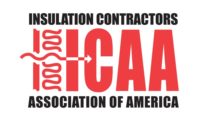As states increasingly look to utilities to play an active role in supporting building energy codes, a new report from a coalition of energy efficiency advocates, has been issued to provide guidance for how state regulatory commissions and energy offices can best develop and evaluate such efforts.
The report, Attributing Building Energy Code Savings to Energy Efficiency Programs, developed by the Northeast Energy Efficiency Partnerships Evaluation, Measurement and Verification Forum; the Institute for Market Transformation; and IEE, an institute of the Edison Foundation, provides in-depth guidance on program options, evaluation protocol, and regulatory considerations for efficiency program administrators and policymakers.
“Building energy codes represent tremendous opportunities for states to meet their increasingly aggressive energy savings goals,” explained Susan Coakley, executive director of NEEP. “Utilities and other administrators of ratepayer funded energy efficiency programs provide an ideal opportunity to both inform and support the development and implementation of codes. This report offers guidance for developing frameworks that connect the two by providing options for policy makers to allow the utilities to claim energy savings from code support effortless as part of their overall efficiency programs.”
Utility-supported energy codes programs are generally in their infancy and face challenges to adoption and scalability, including the lack of uniform standards for crediting utilities with associated program savings. This report investigates evaluation mechanisms or “frameworks” used in states such as California, Arizona, Massachusetts, and Rhode Island and reviews potential hybrid approaches that balance considerations such as potential energy savings, resource requirements, cost-effectiveness, and defensibility.
“State and local building codes are a cornerstone of U.S. energy policy, so this is an exciting but relatively untested area of utility engagement,” said Sarah Stellberg, manager of research and policy analysis at IMT. “Our goal for this report was to provide actionable guidance for policymakers, PAs, and regulators as they test the waters with new codes program activities.”
Recognizing that there is no one-size-fits all approach, the report provides an overview of the code and utility policy environment in 17 diverse states to help categorize the unique opportunities and challenges posed by local conditions.
“Utilities are exploring every possible activity to affect energy efficiency within homes and businesses,” said Lisa Wood, executive director of IEE. “And developing guidance on how to design, implement, and assess the performance of utility-supported building energy codes programs provides yet another cost-effective option for the electric utility industry to deliver energy savings to its customers.”
The Cadmus Group Inc. and its partners, Energy Futures Group, NMR, and Optimal Energy (the Cadmus team) performed the study and produced this research report with invaluable input from advisory committee members including state PUC commissioners and staff, utility program administrators, non-governmental organizations, and regional efficiency organizations.
Download the report, Attributing Building Energy Code Savings to Energy Efficiency Programs at http://neep.org.





Report Abusive Comment